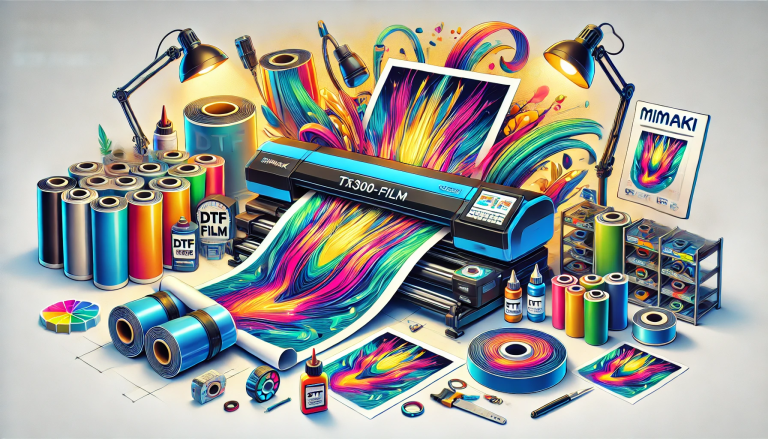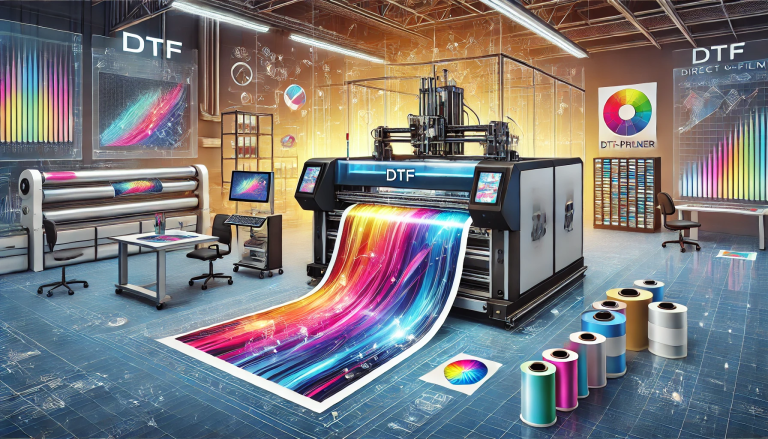“UV DTF Printing vs. DTF Printing: A Comprehensive Analysis” -MAXDTF- UV DTF Printing Paper Wholesale, UV DTF Film Factory, Made in China
Technology in the printing world is continually evolving, bringing in newer techniques to meet increasing demands for better quality, more efficiency, and a wider array of substrates to print on. UV Direct to Film (UV DTF) printing and Direct to Film (DTF) printing are two such advancements in the field. In this article, we will delve into a comprehensive analysis of these two digital printing methods, comparing their features, benefits, and potential challenges.
Understanding UV DTF and DTF Printing
Before we dive into the comparison, let’s briefly outline what each technique entails.
DTF Printing
DTF stands for Direct To Film. This technique involves printing a design directly onto a special film, which is then heat-transferred onto the target substrate. One of the biggest attractions of DTF printing is its versatility—it allows printing on a wide variety of substrates, from cotton and leather to synthetics. Additionally, it doesn’t require any pre-treatment of the material, saving time and resources.
UV DTF Printing
UV DTF printing, on the other hand, involves the use of UV light to cure or dry the ink immediately after it’s applied to the film. The UV process allows the ink to dry instantly, preventing any potential spread or blur. This results in sharp, vivid, and high-quality prints. Like DTF, UV DTF can also be used on a wide range of materials.
Comparing UV DTF and DTF Printing
Speed and Efficiency
UV DTF printing holds a distinct advantage in terms of speed and efficiency. Since UV DTF printing uses UV light to instantly cure the ink, there’s no drying time involved. This means you can proceed to the next step of the process immediately, making UV DTF a faster process than traditional DTF.
Quality of Print
Both techniques produce high-quality prints, but the UV curing process in UV DTF printing ensures more precise and sharper prints. The instant drying prevents ink spread, maintaining the integrity of the original design. However, traditional DTF printing also provides great results, making it a viable option for many businesses.
Durability
UV DTF prints have a reputation for being highly durable. The UV curing process makes the ink more resistant to fading, even when exposed to sunlight, washing, or general wear and tear. DTF prints, while also reasonably durable, may fade faster than their UV DTF counterparts.
Versatility
Both methods can print on a wide range of materials. However, DTF printing may have an edge over UV DTF when printing on heat-sensitive materials, as the UV curing process generates heat which could potentially harm such materials.
Cost
The UV DTF process can be more expensive due to the added equipment and the cost of UV-curable inks. DTF printing, being an older technology, typically has lower initial and running costs.
Final Thoughts
UV DTF and DTF printing both have their unique strengths and potential challenges. UV DTF offers speed, efficiency, and high durability, making it an excellent choice for businesses with high-volume printing needs and a focus on print longevity. DTF, on the other hand, can be more cost-effective and may be a better choice for businesses just starting out or working with heat-sensitive materials.
As with any technology, the choice between UV DTF and DTF printing ultimately depends on the specific needs and resources of your business. By understanding the features and benefits of each, you can make an informed decision that aligns best with your operational requirements and customer demands.




